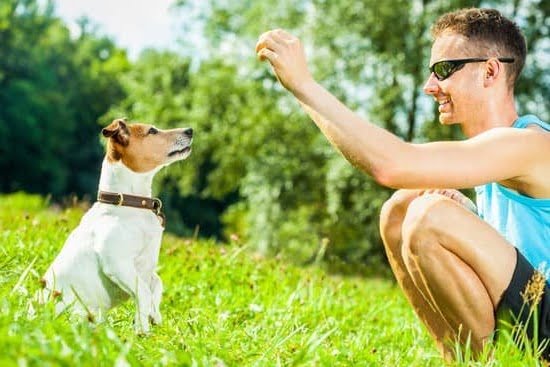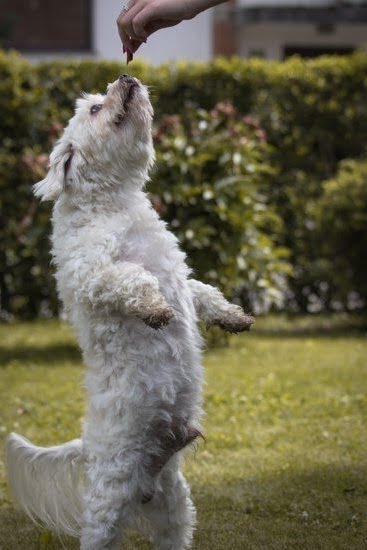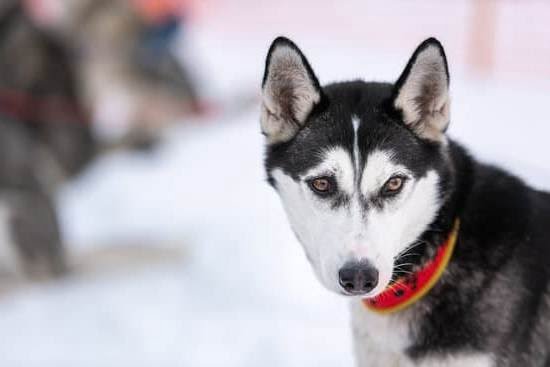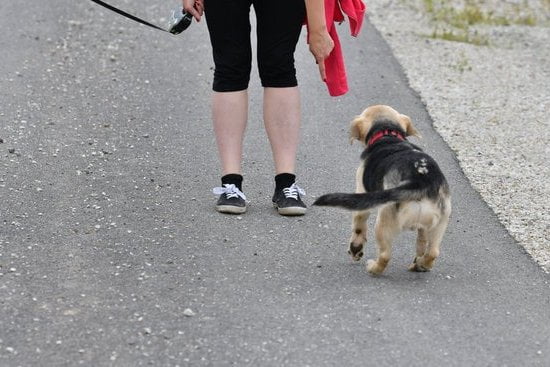When should you potty train your dog? Potty training is a crucial part of a dog’s development and can greatly impact their behavior and overall well-being. It is important for dog owners to understand the signs that their furry friend is ready for potty training, as well as the best age to start this process. Successfully potty training your dog requires patience, consistency, and positive reinforcement.
Potty training is essential for maintaining a clean and hygienic home environment for both you and your dog. By teaching your dog where it’s appropriate to relieve themselves, you can prevent accidents inside the house and minimize unpleasant odors. Additionally, proper potty training can help strengthen the bond between you and your pet, as it establishes clear communication and expectations.
Recognizing the signs that your dog is ready for potty training is crucial in ensuring a successful outcome. These signs may include displaying awareness of their bodily functions, showing interest in specific areas for elimination, or displaying discomfort when they need to go. Understanding these cues can help you determine when it’s the right time to start potty training your dog and set them up for success.
Signs Your Dog Is Ready for Potty Training
When should you potty train your dog? The answer lies in being able to recognize the signs that your furry friend is ready for potty training. Here are some indicators that your dog is prepared to start the potty training process:
- Accidents are becoming less frequent: If you notice that your dog is having fewer accidents indoors and is starting to show some consistency in going outside to relieve themselves, it may be a sign that they are ready for potty training.
- Sniffing and circling: Dogs often exhibit specific behaviors before they go potty, such as sniffing around and circling a particular spot. If you observe these behaviors in your dog, it could mean they are becoming more aware of their need to eliminate and can signal readiness for potty training.
- Showing discomfort with soiled areas: Another sign that your dog might be ready for potty training is if they start showing discomfort when their living space or play area becomes soiled. This can indicate a desire for cleanliness and could mean they are ready to learn appropriate bathroom behavior.
It’s important to remember that every dog is different, so the signs of readiness for potty training may vary from one pet to another. Paying attention to your dog’s behavior and bodily cues can help determine when the best time is to start the potty training process. Once you’ve identified these signs, you can begin taking the necessary steps to successfully train your dog to eliminate in designated outdoor areas.
The Best Age to Start Potty Training Your Dog
Potty training is an essential aspect of raising a well-behaved and hygienic dog. Knowing the best age to start potty training your dog can greatly impact the success of the process. While there is no one-size-fits-all answer, there are certain factors to consider when determining the best age to begin potty training your furry friend.
Size and Breed Considerations
The size and breed of your dog can play a role in determining the best age to start potty training. Smaller breeds typically have smaller bladders and may need to go outside more frequently, while larger breeds may be able to hold their bladder for longer periods. Additionally, some breeds are known for being more stubborn or independent, which may affect when they are ready for potty training.
Developmental Milestones
Similar to humans, dogs go through developmental milestones that can indicate their readiness for potty training. Around 12-16 weeks of age, most puppies have sufficient control over their bladder and bowels to begin potty training. At this stage, they are also more receptive to learning commands and behaviors, making it an ideal time to start the process.
Individual Readiness
It’s important to remember that every dog is unique, so it’s essential to consider your dog’s individual readiness for potty training. Some dogs may show signs of readiness at an earlier age, while others may take longer to grasp the concept. Pay attention to cues such as increased bladder control, decreased accidents indoors, and showing interest in going outside.
When should you potty train your dog? Taking all these factors into consideration will help determine the best age to start potty training your furry companion and set them up for success in mastering this important skill.
Tips for Successful Potty Training
Potty training a dog can be a challenging task, but with the right approach and consistency, it is definitely achievable. Here are some tips to help make the potty training process successful:
1. Establish a routine: Dogs thrive on routine, so it’s important to establish a consistent schedule for feeding, playtime, and potty breaks. Taking your dog out at the same times each day will help them understand when it’s time to go outside.
2. Use positive reinforcement: When your dog eliminates outside, be sure to praise and reward them with treats or verbal praise. This will help them associate going potty outside with positive experiences, making them more likely to continue the behavior.
3. Supervise and control their environment: Keeping a close eye on your dog and limiting their access to areas of the house where accidents can occur will help prevent indoor accidents. Using baby gates or keeping your dog on a leash indoors can help with this.
By following these tips, you can set your dog up for success in their potty training journey. Remember to be patient and consistent, as every dog learns at their own pace.
Common Mistakes to Avoid When Potty Training Your Dog
Not Being Consistent
Consistency is key when potty training your dog. One of the most common mistakes that pet owners make is not being consistent with their training methods. This includes taking your dog out to potty at the same times every day, using the same door to go outside, and praising them for going in the designated spot. Not being consistent can confuse your dog and make it harder for them to understand what is expected of them.
Punishing Accidents
Another mistake to avoid when potty training your dog is punishing them for accidents. Punishment can create fear and anxiety in your pet, which can actually lead to more accidents instead of preventing them.
If you catch your dog in the act of having an accident indoors, simply interrupt them without yelling or frightening them, then take them outside to finish. It’s important to remember that accidents are a normal part of the learning process and should be handled with patience and understanding.
Not Providing Enough Supervision
Lack of supervision is yet another common mistake when potty training dogs. Without proper supervision, it’s easy to miss the signs that your dog needs to go outside, leading to accidents indoors. It’s important to keep a close eye on your pet, especially during the initial stages of potty training. This means watching for cues such as circling, sniffing around, or suddenly becoming restless. By providing adequate supervision, you can proactively prevent accidents and reinforce good potty habits.
By avoiding these common mistakes, you can set your dog up for success in their potty training journey and create a positive experience for both you and your furry friend.
Using Positive Reinforcement in Potty Training
Potty training can be a challenging but essential process for any dog owner. One of the most effective methods for successful potty training is using positive reinforcement. Positive reinforcement involves rewarding your dog for displaying the desired behavior, in this case, using the designated potty area. This method has proven to be more effective than punishment-based techniques and strengthens the bond between you and your furry friend.
When should you potty train your dog using positive reinforcement? It’s important to start incorporating positive reinforcement as soon as you begin potty training. This means immediately praising and rewarding your dog when they eliminate in the correct spot.
Whether it’s with verbal praise, treats, or playtime, make sure to let your dog know that they’ve done something right. Consistency is key when using positive reinforcement, so make sure to reward your dog every time they exhibit the desired behavior.
In addition to rewards, another aspect of positive reinforcement is ignoring accidents and not punishing your dog for mistakes. Accidents are a natural part of the learning process, and scolding or punishing your dog for them can have negative effects on their potty training progress.
Instead, focus on reinforcing the positive behavior and providing ample opportunities for your dog to do their business in the right place. With patience and consistency, using positive reinforcement can lead to a successful and harmonious potty training experience for both you and your canine companion.
How Long Does Potty Training Take?
Potty training your dog can be a challenging process, and one of the most common questions that many pet owners have is, “How long does potty training take?” The truth is, there isn’t a one-size-fits-all answer to this question. The length of time it takes to potty train a dog can vary depending on a variety of factors, including the dog’s age, breed, and individual personality.
In general, potty training can take anywhere from a few weeks to several months. Puppies typically take longer to potty train than adult dogs, as they have smaller bladders and may not have full bladder control until they are around six months old. Additionally, some breeds may be more stubborn or independent, making the potty training process more challenging and time-consuming.
Consistency and patience are key when it comes to potty training your dog. It’s important to establish a routine and stick to it, taking your dog outside to the same spot every few hours, after meals, and first thing in the morning and last thing at night. Positive reinforcement is also essential in speeding up the potty training process. When your dog goes potty outside, be sure to praise them and offer treats as a reward.
Remember that accidents are bound to happen during the potty training process. It’s important not to get discouraged or punish your dog for accidents indoors. Instead, continue with consistent training and positive reinforcement. If you find that after several weeks or months there has been little progress in your dog’s potty training, it may be time to seek professional help from a veterinarian or animal behaviorist who can provide guidance on how to address any underlying issues.
Troubleshooting Potty Training Challenges
Potty training your dog can be a challenging task, and it’s common to encounter difficulties along the way. Accidents in the house, reluctance to go outside, or regression in behavior are some of the common challenges that dog owners face when potty training their pets. It’s important to address these issues promptly to ensure a successful potty training experience for both you and your dog.
One common challenge during potty training is when your dog refuses to go outside to relieve themselves. This may be due to fear of certain elements outdoors, such as loud noises or unfamiliar surroundings. To address this issue, try slowly introducing your dog to outdoor spaces, using positive reinforcement techniques such as treats and praise when they go outside. Additionally, creating a consistent routine for outdoor potty breaks can help alleviate any anxiety your dog may have about going outside.
Another challenge that dog owners may encounter during potty training is accidents inside the house after making progress. This regression in behavior can be frustrating, but it’s important to remain patient and consistent in your training approach. When accidents occur, avoid scolding or punishing your dog, as this can create anxiety and hinder their progress. Instead, thoroughly clean the soiled area with an enzymatic cleaner to remove any lingering scent that may encourage repeated accidents.
Seeking professional help for potty training issues is recommended when you have tried various methods and strategies without seeing improvement in your dog’s behavior. Professional trainers and behaviorists can provide personalized guidance and support to address specific challenges that you may be facing with your dog’s potty training. Don’t hesitate to reach out for assistance if you feel overwhelmed or unsure about how to effectively address your dog’s potty training issues.
| Common Potty Training Challenges | Recommended Solutions |
|---|---|
| Reluctance to go outside | Gradual introduction to outdoor spaces; Positive reinforcement |
| Accidents inside the house after progress | Avoid punishment; Thoroughly clean soiled areas; Remain patient |
| Lack of improvement despite efforts | Seek professional help from trainers or behaviorists |
When to Seek Professional Help for Potty Training Issues
Potty training your dog is an essential part of their development and well-being. It helps to establish good habits, reduces messes in the home, and makes for a happier relationship between you and your pet. Understanding when to potty train your dog is crucial, as it can have a significant impact on the success of the training process.
Signs that indicate your dog is ready for potty training include being able to control their bladder and bowel movements, showing signs of discomfort when they need to relieve themselves, and being able to understand basic commands. The best age to start potty training your dog is generally around 12-16 weeks old, when they have enough control over their bodily functions.
When should you potty train your dog? It’s important to keep in mind that every dog is different, so it’s essential to be patient and consistent during the process. Utilizing positive reinforcement, recognizing any common mistakes to avoid, and troubleshooting challenges that may arise are all key aspects of successful potty training.
If you find that you’re experiencing difficulties with potty training despite your best efforts, it may be time to seek professional help from a professional dog trainer or behaviorist who can provide guidance and support customized for your unique situation. Remember, every pup is capable of learning how to go potty in the appropriate places with the right approach and dedication.
Frequently Asked Questions
What Is the Best Age to Potty Train a Puppy?
The best age to potty train a puppy is typically between 12 and 16 weeks old. At this age, puppies can control their bladder and bowel movements better, making the training process more effective.
Can an 8 Week Old Puppy Be Potty Trained?
Yes, an 8-week-old puppy can be potty trained, but it requires patience and consistency. Puppies at this age have limited bladder control, so frequent trips outside and positive reinforcement are key to successful training.
How Do You Know When Your Dog Needs to Be Potty Trained?
You will know when your dog needs to be potty trained if they start having accidents inside the house, show signs of restlessness or sniffing around for a spot to relieve themselves, or if they haven’t been taught proper bathroom habits yet. Recognizing these signs can indicate the need for potty training.

Welcome to the blog! I am a professional dog trainer and have been working with dogs for many years. In this blog, I will be discussing various topics related to dog training, including tips, tricks, and advice. I hope you find this information helpful and informative. Thanks for reading!





